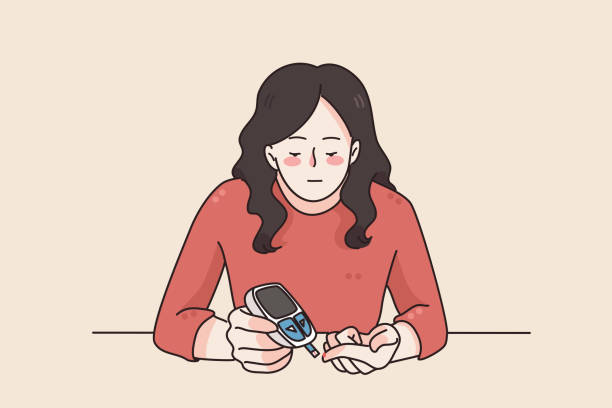What Is a Continuous Glucose Monitor and Why Is It Trending?
A continuous glucose monitor (CGM) is a small, coin-sized device worn as a patch that measures your glucose levels every few minutes and sends the data to a phone app. Originally designed for people with diabetes, it’s now being promoted as a tool for anyone wanting to optimize health, lose weight, or manage energy levels.
Endorsed by figures like Dr. Casey Means, who co-founded a CGM startup, these devices are marketed with bold promises to “revolutionize your health.” The patch itself is painless and tracks sugar levels in the fluid between skin cells—a proxy for blood sugar. Most CGMs also include apps that allow you to log your meals and identify patterns between your diet and glucose spikes.
Why Healthy People Are Now Using CGMs
In March 2024, the FDA approved CGMs for non-diabetic use, paving the way for companies like Dexcom and Abbott to sell them widely. Each patch lasts 14 days and costs around $50—roughly $100 monthly for continuous tracking.
But the key question is: Are they actually beneficial if you’re not diabetic?
Understanding Normal Glucose Spikes
After eating carbohydrates, even healthy individuals experience temporary rises in blood sugar, followed by a return to baseline. According to nutrition experts, this is completely normal. But when those peaks are frequent or extreme, they may contribute to a higher risk of:
- Obesity
- Type 2 diabetes
- Cardiovascular disease
- Certain cancers
They can also make you feel hungrier, triggering overeating. The idea is that by identifying which meals lead to extreme spikes, users can adjust portion sizes or ingredients for better metabolic outcomes.
What the Research Really Shows
Two randomized controlled trials explored CGM-driven diet plans compared to standard ones:
- Mediterranean Diet vs. CGM-based Diet
The CGM approach didn’t outperform the Mediterranean diet for weight loss but did improve glucose control. - Low-fat, Whole-Grain Diet vs. CGM-based Diet
Both groups saw similar average weight loss and minor glucose improvements. However, individual responses varied dramatically.
Some participants lost up to 30 pounds and improved energy levels, while others gained weight. Scientists are now investigating which factors determine success, such as genetics, insulin sensitivity, and dietary compliance.
Who Might Actually Benefit from Using a CGM?
1. If You’re Sensitive to Carbs
Some people respond poorly even to healthy carbohydrates like quinoa, brown rice, or oatmeal. Nutritionist Karen Kennedy notes that these users often find they function better on lower-carb diets, helping to reduce visceral fat and improve energy levels. The CGM acts as a mirror, revealing how each food affects their body.
2. If You Need Motivation to Improve Your Diet
Many know they should eat better—but don’t. The real-time feedback from CGMs helps bridge that gap. Seeing a spike after a typical breakfast can be enough to inspire immediate changes, such as adding protein or fiber to meals. This behavioral shift may be more effective than waiting months for lab results.
3. If You Want More Accountability
Meal logging has been shown to significantly impact dietary choices. In a NYU study, those who regularly logged their meals saw the greatest benefits. And it doesn’t have to be digital—even a pocket notebook can help create awareness and accountability.
Reasons to Be Cautious Before You Invest
Confusing or Misleading Data
Without proper education, many users don’t know how to interpret their glucose numbers. Even scientists and doctors admit that ideal glucose patterns for non-diabetics aren’t fully understood. What looks like a “spike” might be entirely normal.
Inconsistent Readings
Studies have shown that CGMs can give different readings for the same meal on different days. They may also overestimate actual glucose levels compared to direct blood measurements.
Avoiding Healthy Foods
Some users start fearing normal glucose responses to nutrient-rich foods like fruits or whole grains. For example, mild spikes after eating blueberries are perfectly healthy—but without guidance, users might wrongly cut them out.
Insulin Resistance Can Be Hidden
Even if glucose levels appear normal, a person might still be insulin resistant. That’s why it’s important to combine CGM use with professional lab testing to assess insulin levels and other health markers.
Final Thoughts: CGMs Are Tools, Not Magic
A continuous glucose monitor can be an eye-opening health tool for the right person, especially those with carb sensitivity, motivation issues, or a desire for more dietary awareness.
But CGMs aren’t a substitute for clinical evaluation or balanced nutrition. If you’re interested in trying one, consider speaking with a healthcare provider or nutritionist for proper interpretation of your data and to avoid misleading conclusions.
For more insight on metabolic health and blood sugar regulation, read our guide on how to interpret glucose levels and early signs of insulin resistance.



